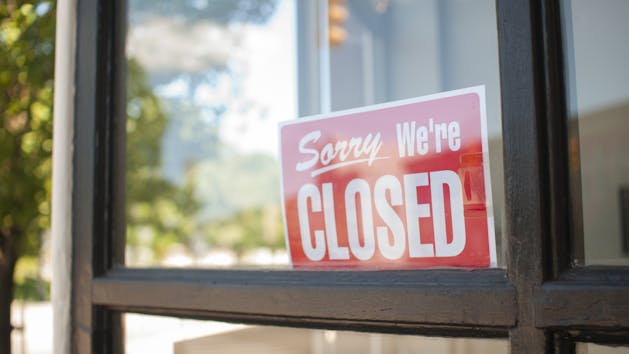Find the right solution for your business with our free Fleet Management Buyer’s Guide.
TSI: Is Doing Good Good for the Bottom Line?
There’s good news for businesses in the oil and gas industry, and it couldn’t come at a better time. The current tide of negative press on topics such as carbon emissions, dangerous extraction methods and fracking has cast a shadowy pale on the industry and has many wondering if the golden age of oil and gas is forever gone.
Recent research by the Boston Consulting Group (BCG) may be the ray of hope executives are looking for, with their impact study that highlighted the oil and gas industry as having the most to gain from a new approach that woos both investors and the wider public, at the same time.
Total Societal Impact (TSI) was coined by BCG to describe the impact a business has on society, whether positive or negative. Though this may seem like a “soft” metric at first glance, BCG’s study concluded that oil and gas companies that had the highest TSI scores also enjoyed a 19% premium on their valuation.
This far exceeded the potential gains in other industries that were studied including banking (3%), consumer packaged goods (11%) and biopharmaceuticals (12%).
So, does doing good have a significant and tangible impact on your business, one that can be measured? According to BCG, efforts to reduce any negative societal impacts (pollution, accidents or company carbon footprint) while finding ways to do more good (safer driving, protected workers and compliant sites) are investments that pay off.
So, how does a business improve its TSI score? Telematics software offers two key ways—safety and compliance—oil and gas businesses in particular can demonstrate a positive impact.
A safer working environment
Creating a safer environment for employees is a top priority for many businesses, particularly in oil and gas. According to a 2016 survey conducted by the Aberdeen Group on mitigating risk, oil and gas companies cited reducing risk (80%), staying compliant on regulation (76%) and minimizing cost (32%) as among the top reason to focus on safety.1
Likewise, it also bears a significant impact on TSI. “Very strong occupational health and safety programs” and adding in strong employee training programs are central to improving TSI scores. In fact, BCG reports that these strategies earned oil and gas businesses an additional 3.4% premium on their margins.
For businesses operating fleets, telematics software offers unique functionality to support your efforts to strengthen your occupational health and safety program. Many solutions also provide the ability to customize data and insights based on the size of your workforce, the type of work being done and the different hazards faced by your team, helping you maximize the impact of your investment.
- Mobile forms/checklists: Digital forms that can be accessed from anywhere using a mobile phone can be a valuable tool for reviewing safety checklists and correct operating procedures.
- Real-time driver coaching: Drivers can be alerted to dangerous driving habits in real time so they can self-correct and reduce the risk of an accident.
- Safety scorecards: Managers can monitor and track trends of unsafe driving across the team.
- Driving hours recorded: With access to total hours driven, dispatch teams can make sure new jobs assigned are within safe limits and reduce the risk of fatigue.
Tools like these help reinforce safe operating procedures as well as increase awareness across the whole team, driving the ultimate goal of reducing accidents and improving your TSI score.
Improved compliance
Compliance is especially complex and challenging for companies within the oil and gas industry. In addition to the myriad government mandates fleets must comply with—hours of service, pre-trip inspection reports, employee training—employees are also tasked with being aware of and following internal company-specific policies.
With so many different requirements from different sources, it’s understandable that even well-intentioned employees can at times be found noncompliant or unaware. But there are things fleets can do to keep compliance top of mind and within reach. Telematics software helps both back office supervisors and your mobile workforce keep up with all their compliance responsibilities day to day.
- Legal compliance tools: Provide drivers with apps that help them maintain compliance with HOS (ELD) and pre-trip inspections (DVIR).
- Route planning compliance: Create routes that respect the legal limitations faced by commercial drivers including hazardous materials, oversized vehicles and load type.
- Mobile checklists: Create custom step-by-step procedures to enforce specific internal policies and regulatory requirements.
- Compliance reporting: Make it easier to track a range of compliance metrics including aspects of the International Fuel Tax Agreement (IFTA) like greenhouse gas (GHG) emissions or miles driven by state.
- Off-road fuel tax rebates: Though not a legal requirement, accurate reporting of off-road miles and fuel use helps businesses reduce fuel tax dollars.
- Geofence alerts: Monitor any hazardous areas that by setting up automated geofence alerts and keep safety or security personnel informed.
To enforce compliance and a culture that it’s an important part of being a socially-responsible business, businesses must employ go beyond reminders. They must provide the tools and training to make it a part of the business’s everyday routine.
Environmental compliance matters to your customers
Businesses often prioritize compliance with government regulations because of the immediate and tangible impact of fines and other penalties, but the type of compliance considered most important to customers is environmental compliance. An Aberdeen Group survey on compliance revealed that oil and gas companies reported 27% higher likelihood of customer demand of more environmentally minded product than other industries.2 The report also highlighted that oil and gas companies had more than twice as much pressure than other industries to fulfil their corporate social responsibility.
Specifically, telematics software can help businesses align their daily activities with a mission to minimize negative effects on the environment:
- Reduced unproductive idling
- Smarter routing including specific time windows, such as recurring visits to service well sites
- Right-sized dispatch that sends the most fuel-efficient vehicle to a job
- Location awareness to reduce miles, helping to reduce or eliminate wasted trips
- Motivational tracking apps to help workers drive more economically
Measuring your TSI progress
With the extensive regulatory requirements place on oil and gas companies, not to mention the higher rate of subcontracting necessary to complete work, it’s no surprise that data is already deeply embedded in the industry. In fact, data collection and management is and has been a key strategy for mitigating risk. Companies in the industry are 62% more likely than those not within the industry to have visibility of product data company-wide.2
But perhaps just as important as measuring performance on any goal at a given time is monitoring the progress toward that goal over time. Interpretation and action based on collected data is where challenges are faced. The Aberdeen Group reports that 31% of companies reported gaining the insight to support business decision with data is especially problematic.1
When discussing eight keys to successfully utilizing TSI, Forbes magazine reinforces the importance of reporting: “Define the right metrics for measuring various dimensions of TSI, align them with the goals of external stakeholders, and develop internal cause-and-effect models to tie societal impact activities to business performance.” Measurement helps integrate incremental day-to-date efforts to the wider business, making your changes more sustainable.
Fleet management software includes a variety of standard and configurable reports that track key metrics to help improve your TSI score. Reports available include measuring unnecessary idling, out-of-route miles, GHG emissions (part of your company carbon footprint), total fuel consumed or miles driven and asset lifecycle.
Individual businesses can design custom reports specific to their workforce and daily operations with metrics tracked on the web-based dashboard for easy visibility into progress being made.
Telematics software for a better TSI score
Businesses in the oil and gas industry are uniquely positioned to take advantage of telematics software and related mobile apps to help improve their safety and compliance efforts, which can lead to a better TSI score and business valuation.
The sheer quantity of data gathered is an important reason for oil and gas companies to consider telematics to help automate data and insight gathering, both of which can be especially challenging for these companies. Companies that have these capabilities report a higher likelihood to reduce analysis time (67% more likely) compared those using manual data management methods. This was in addition to other benefits like accelerating products to market (93% more likely), increasing revenue growth (67%) and growing operating profit (67% more likely).
Telematics software is not only flexible in meeting the rigorous demands of the oil and gas industry, it’s also web-based, a quality that is of increasing importance to oil and gas companies.
Web-based software, referred to as software as a service (SaaS), recently has seen a surge in adoption within the industry since 2009. The top drivers for this surge were reduced IT costs—in fact, oil and gas businesses were three times more likely to cite this as the main reason than any other industry studied—and needing software that scales to adapt to business change.1
BCG may have its own system for measuring TSI, but for businesses tracking hard metrics like expenses and profits, the effects of doing good can be hard to grasp. Take the first step towards a better TSI score (and improving your business’s value) with a free online demo, and see how our software can help you make a positive difference to both your business valuation and the wider community.
Sources
1 http://www.aberdeen.com/research/14333/14333-kb-cloud-incident-risk/content.aspx
2 http://www.aberdeen.com/research/12109/rr-compliance/content.aspx
Find out how our platform gives you the visibility you need to get more done.



